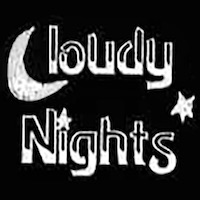Here are some interesting threads on DOF from Cloudy Night's and a comment by Prof. EdZ and Everlasting Sky. It is more complicated than you think, apparently.
Page 1 of 2 - Depth of Field ? - posted in Binoculars: What optical parameters determine a binoculars Depth of Field?It would seem to be factor(s) besides magnification, objective diameter and effective exit pupil. For example, there are several web comments on the remarkable DOF of the Fujinon...

www.cloudynights.com
Why Such Incredible Depth of Field On My Fuji 7x50? - posted in Binoculars: Before I ask the question I am about to ask I want to mention that I am quite familiar with f-stops and iris size. I am a long time amateur photographer and have used Canon EOS when there was no digital. So I get the...

www.cloudynights.com
"Depth of Field is the range of objects from foreground to background seen in focus without moving the focus dial. Longer focal lengths will provide greater depth of field. Further distance from the object will provide greater depth of field. It has no application at all in astronomy, objects are focused at infinity. It is very important in terrestrial use. Although I'm sure a certain amount of depth of field is present, I wouldn't be surprised that people misinterpret sharpness of image and brightness of image combined to present what appears to be a greater depth of field. A binocular with a less sharp image and less bright image may not appear to have as great a depth of field. As an example, a 7x50 used in daylight vs. a 7x35 used in daylight. The following is from the article on Affect of Eye Pupil on Binocular Aperture.[What happens in low light terrestrial viewing, where many seem to prefer a larger exit pupil because it seems brighter? Now we need to go back to the cardinal rule that states exit pupil controls effective aperture. There would be no more light delivered by either binocular if eye pupil is 2.5 mm, BUT, as seen through a 2.5 mm eye pupil, there would seem to be a difference in the two binoculars, and you might be able to see this difference. The 10x25 binocular is using the entire objective lens, and we have seen from vignette studies, many (if not all) binocular systems block (vignette) portions of the light from the periphery of the objective lens. The 10x25 is using the entire diameter of the lens to light the exit pupil, and the light from the outer portions of the objective is reduced in the exit pupil due to vignette. Not all the light gathered by the 10x25 reaches the eye. Most vignette studies show that approximately the central 50% of an objective lens provides 100% illumination of the exit pupil. The light delivered from the area outside the central 50% of the objective does not all reach the exit pupil. In the 10x50 binocular, stopped down by the daylight contracted eye pupil to 10x25, only the central 50% of the objective is putting light into the exit pupil. The key is this 2.5 mm exit pupil is 100% illuminated from the central portion of a stopped down 50 mm lens. A stopped down 10x50 is providing a lot more illumination to the same size 2.5 mm exit pupil than a full aperture 10x25. That would account for a significant difference in apparent brightness between the two, even though both situations have a 2.5 mm exit pupil. As a bonus, that same 10x50 binocular will serve the user better under lower light conditions when eye pupil is enlarged to possible 3 mm or 4 mm. Same analogy can be made with the 7x50. The more central area of the objective is being used to provide the light to the eye. This implies better sharpness of image and greater light distribution across the eye's entrance pupil. The effect this has is a much more noticeable image. While this is not the sole factor, this may be interpreted as greater depth of field. It is definitely contributing to it."
"The Fujinon 7x50 has been my favorite binocular for 22+ years. I never touch the focus and each barrel it is left permanently on 0 diopters. Everything is is always in focus. That's what I call civilized. As an aside, I tried a pair of Kowa Genesis 8x33 earlier this year... had to return them within a few days. Every target required re-focusing. A squirrel, that tree just over, that wall, that building, that plane, that mountain. Horrific eye fatigue quickly resulted. Very... uncivilized. Back to 7x50 for daytime. The Kowa was 590g in weight VS 1450g or thereabout for the Fuji... I had high hopes for the Kowa! So light weight with such good ergonomics. But for me, I consider such constant re-focus performance utterly unusable & unacceptable. 7x50 has given me unreasonable expectations, I suppose. Of course, there must be many other good lightweight roof's in that size which do not require endless refocus? Too lazy to seek the answer... pass the 7x50, please!"








